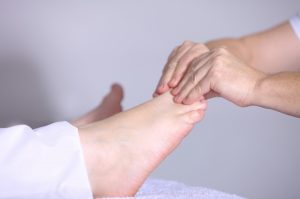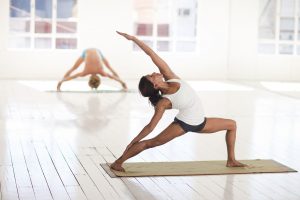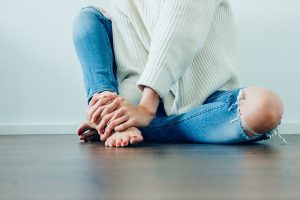Are you looking for a way to speed up your runner’s knee recovery time?
Runner’s knee, or patellofemoral pain syndrome, is a broad term that refers to knee pain associated with several different conditions. While it’s a common injury among athletes, anyone can experience runner’s knee regardless of how frequently they engage in physical activities.
Runner’s knee is typically a dull, aching pain that’s usually located around the front of the knee. Although runner’s knee can affect people of all ages, it’s most common among adolescents and young adults, according to Mayo Clinic. Older folks experiencing knee pain usually find that it’s related to arthritis.
To determine how long you can expect your recovery time to be and what you need to do to help it — whether it’s just staying off your feet or getting massages for runner’s knee — it’s important that you recognize the underlying cause.
Common causes include:
● Misaligned bones between the hips and ankles
● A direct impact to the knee
● Excessive use (such as frequent running)
● Conditions that affect how you walk (flat feet, for example)
● Weak muscles in the knee or hip areas
● A condition called Chondromalacia patellae that can cause kneecap cartilage to deteriorate
● Spraining or tearing the anterior cruciate ligament (an ACL injury)
You may need to seek further medical attention if the pain persists after initial minor treatments. Although it’s uncommon, severe cases of runner’s knee may require knee surgery. Before you consult a surgeon, try the following easy treatments that have been known to improve the typical runner’s knee recovery time.
1. Rest and Elevation

In most cases, the runner’s knee goes away after a few days. You should avoid any strenuous activities that could exacerbate the problem. Avoid activities such as running, playing sports, performing intense exercises such as lunges or squats, and sitting or standing for too long.
While you’re resting, it’s a good idea to keep your leg propped up on a pillow, so it’s above heart level. This reduces blood flow to the knee, which naturally keeps inflammation and swelling down. This is the easiest way to speed up the average runner’s knee recovery time, and it’s an excellent opportunity to catch up on your favorite TV shows or that book you’ve meant to read!
2. Ice
While you’re resting and elevating your knees, it’s a good idea to apply ice periodically. Cold temperatures also reduce inflammation and swelling while numbing the pain. Be sure to wrap the ice or ice pack in a towel, so you don’t damage your skin. Apply ice to the affected area every 15-20 minutes, intermittently, for two to four hours.
3. Massage

In contrast to treatments that reduce blood flow to the knee, light massages for runner’s knee encourages blood flow to the area, a method that can also quicken your recovery. In addition to promoting healthy blood flow, massage can loosen and realign tight muscles and tendons that may be causing pain.
The benefits of regular massage can’t be overstated, especially if you go to a professional. However, if you’re treating a specific injury or condition, it’s wise to check with a doctor first to ensure massage won’t cause further damage. If you do plan on massaging your knee on your own, keep it gentle and be sure to massage the whole knee—not just the painful area.
4. Stretching and Yoga

Therapeutic stretches, including yoga, may help to accelerate your runner’s knee recovery time. Like yoga, you should discuss these treatments with a medical professional to make sure it’s a safe treatment for your specific injury.
The reason why yoga can be an effective treatment might surprise you. The right stretches and poses don’t usually target the knee itself, instead they focus on the hips. If you have a misalignment in the hip area, causing excessive pressure on your knee, stretching the area may help to restore symmetry. You may also find that posture exercises help to eliminate bad standing habits that could lead to knee pain.
5. Compression
A knee brace or wrap holds your knee in the proper position, so the injury doesn’t get worse. It also helps to reduce swelling and pain. Make sure you don’t wrap the knee too tight. If the skin feels cool or turns blue, it’s too tight. You may also be able to expedite your runner’s knee recovery time by using a cane or walker to take the pressure off the knee when walking.
6. Custom Arch Supports
Often, the runner’s knee is caused by a physical shock to the bottoms of your feet while running. Replacing the inner soles in your shoes with custom arch supports can add a level of cushion that helps to reduce the impact.
Orthotics can also alleviate pain associated with conditions such as flat feet or when one leg is longer than the other. Runner’s knee can be caused by minor discrepancies that compound over time. Talk to your doctor if you think custom insoles could be a viable solution.
Start with the RICE Method
Not all knee injuries are the same, so you may want to speak to a qualified physician about improving your runner’s knee recovery time, especially if you think you may have a severe injury and not just a mild ache from overuse.

If you don’t think a visit to the doctor is in order, your best bet is to start with the RICE method before moving on to more elaborate treatments. RICE stands for Rest, Ice, Compression, and Elevation.
While treatments like massages for runner’s knee, stretching, physical therapy, and even surgery may be suitable options, they should be reserved as secondary solutions rather than your immediate go-to decision.
Finally, remember that knee pain may be caused by arthritis, especially if you’re older. Arthritis may require unique treatments, so if you think arthritis could be the cause, contact your doctor before pursuing any physical treatment that could end up causing more damage instead of speeding your runner’s knee recovery time.


